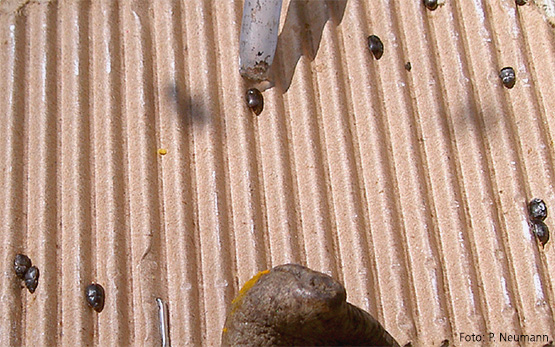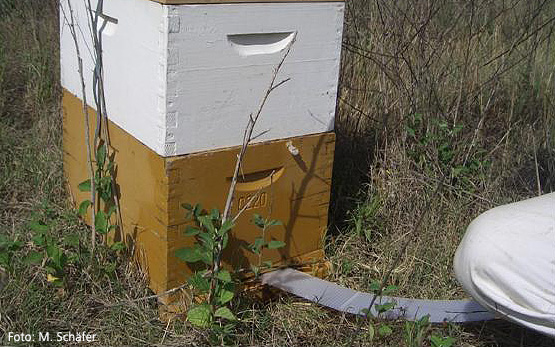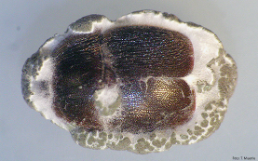Infestation by the small hive beetle constitutes an epizootic disease that must be controlled. Beekeepers suspecting that beetles in a beehive are Aethina tumida must notify the competent cantonal veterinary authority immediately, so that the suspicious case can be examined and the procedure described in the technical guidelines can be applied. Suitable control measures will need to be defined for Switzerland if the beetle manages to establish a viable population in the country.

Adult small hive beetles in an Elzen et al (1999) cardboard trap. A whole range of trap systems have been developed to catch adult beetles in hives. All trap systems and especially visual hive screenings are comparatively labour intensive when searching for the often well hidden adult beetles. (Photo: P. Neumann)

In order to facilitate diagnosis and to enhance quantitative estimates, we developed diagnostic strips, which are fairly easy to use for apiculturists especially for large-scale operations (e.g. in the US). Application of the diagnostic strips made of corrugated cardboard, which are introduced via the flight entrance. About 30% of adults can be detected after two days in the hive using this approach. (Photo: M. Schäfer)
Conventional control of small hive beetles is achieved via application of chemicals in hives and the surrounding soil. This process introduces risks of beetle resistance, contamination of bee products and undesirable side effects on bees and other non-target organisms. Therefore, analogous to varroa mite control (e.g. using acids), a more sustainable, alternative control is preferred. Initial results using entomopathogenic fungi are promising, but further experiments are required before such methods can be used in conjunction with current apicultural practices.

An adult small hive beetle which has been killed by an entomopathogenic fungus. (Photo: T. Muerrle)





